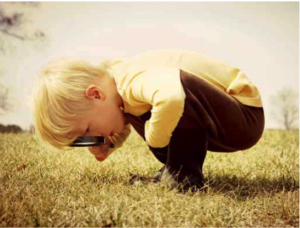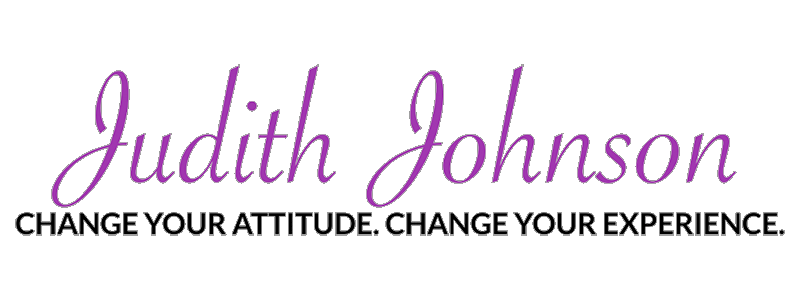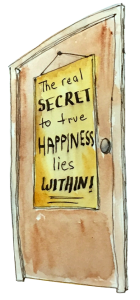Did you know that your brain gives preference to visual information?
Researchers L.D. Rosenblum, Harold Stolovitch, and Erica Keeps refer to our senses as learning portals. They offer the following statistics regarding the percentage of data processed by each of our five senses:
Sight (both through our eyes and unconscious visual perception) accounts for an estimated 83% of the information we process. Another 11.0% comes through hearing, 3.5% through smell, 1.5% through touch, and the remaining 1.0% through taste.
Why is this significant?
By design, our eyes focus our attention outward. The fact that the vast majority of our sensory data is visual therefore predisposes us to an external frame of reference that focuses on the physical world.
Unaware that we are “seeing” the projection of an internally-filtered reality, we misinterpret our perceptions of reality to be reality itself. Consider the heated arguments between individuals of opposing political points of view. Each sees a different reality and believes that they are “right” and those on the other side of the aisle are “wrong.”
Until we become aware of how our internal data processing determines the reality we perceive, we think we are reacting to an external reality, rather than determining what that reality appears to be.
For most of us, our socialization includes indoctrination into a binary model of consciousness. In other words, we are taught to sort people and experiences into right/wrong, good/bad, beautiful/ugly, desirable/undesirable and so on. In fact, life is far more complex and messy than that.
Learned biases and preferences short-circuit the process of developing curiosity about those differences that we are taught to reject. There is a built-in bias against diversity in this way of encountering unfamiliar people and experiences. Therefore, diversity requires a new way of perceiving beyond our autopilot right/wrong sorting process.
In a binary approach, there are only two choices. That means if we encounter someone who is different, we can’t both be “right” or “OK.” As a result, we develop very narrow tolerances for differences, rather than nurturing our curiosity and openness to all kinds of people and experiences.
 Would you like to know the best way to tame your inclination to judge anyone who is different than you or any experience you don’t like? It’s to become really curious and to call upon your inner detective. When we are quick to judge, we shut ourselves down. We also close ourselves off from additional information available to us. Our myopic view blinds us from alternative ways of seeing ourselves, the other person, and the situation itself.
Would you like to know the best way to tame your inclination to judge anyone who is different than you or any experience you don’t like? It’s to become really curious and to call upon your inner detective. When we are quick to judge, we shut ourselves down. We also close ourselves off from additional information available to us. Our myopic view blinds us from alternative ways of seeing ourselves, the other person, and the situation itself.
When we become curious, we open ourselves up and draw ourselves closer to those we don’t understand rather than shutting them out or pushing them away.
By about the age of five or six, we have the foundation of our self-image in place and we begin to unconsciously protect, conceal, or improve our image of ourselves and to become competitive with the self-images of others. We spend most of our time focused outward through our self-image as we negotiate and navigate our way through the world and relate to the imagined self-images being projected by others.
We learn to live in a world that is a collective figment of our imaginations in which we attempt to defend and elevate our status relative to that of others.
We selectively see things that support our existing beliefs and filter out things that do not agree with our way of seeing things.
Another paradox of our visual orientation is that it makes it very difficult for us to verify and trust the existence of non-physical reality. This is the territory of self-knowledge, intuition, and spiritual awareness.
It is interesting to note that when physical things come into being we refer to them as being born. When we refer to entering or increasing spiritual awareness, we call it awakening. We become aware of something that already exists. In physical form, we exist as separate beings. Spiritually, we exist within oneness. It is our mind and emotions that have separated us.
Paying attention to non-physical reality is a bit like being a salmon swimming upstream against the current. It requires an intentional redirection of our focus. To turn inward, we must engage in a more intimate relationship with ourselves. To awaken ourselves spiritually require a different state of mind.
The external orientation of our attention, coupled with the bombardment of unconscious sensory data, makes it extremely difficult to awaken our spiritual awareness. It requires a different state of consciousness to comprehend that we are at once one and the same. We are both singular and separate.
Learning how to become more conscious of our own unique data sorting process is essential to mastering the art of being who we authentically are.
Spiritual awakening involves consciously and intentionally developing our ability to override our usual way of being and perceiving. It requires looking within rather than being drawn to an external focus by the dominance of visual sensory input we are receiving. It means cultivating a non-judgmental perspective towards differences and an awareness of a level upon which we are all the same.
This requires cultivation of a childlike curiosity rather than a defensive and competitive stance regarding our perceptions versus those of others. It requires an entirely different kind of awareness — not based on sensory data. Rather it is a matter of attunement to something greater than our physical form that is shared by all. Language and empirical science fail us in speaking clearly about such matters, but do not negate their existence.
Ludwig Wittgenstein concluded in his monumental book, Tractatus Logico-Philosophicus, “whereof one cannot speak, thereof one must be silent.” This German, philosophical heavyweight is reputed to have put down is pen and become a gardener after writing that.
Each of us has our own unique life to lead. As we learn about the power of the Reticular Activating System (RAS) it becomes clear that the quality of our consciousness determines how we experience our lives.
Ghandi said, “My life is my message.” What does your life say about you? How skilled are you at being an active co-creator of your life?
In case you missed it, here is the link to Part 1 of this blog post.
If you would like to know more about me and my work, please explore my website here.






